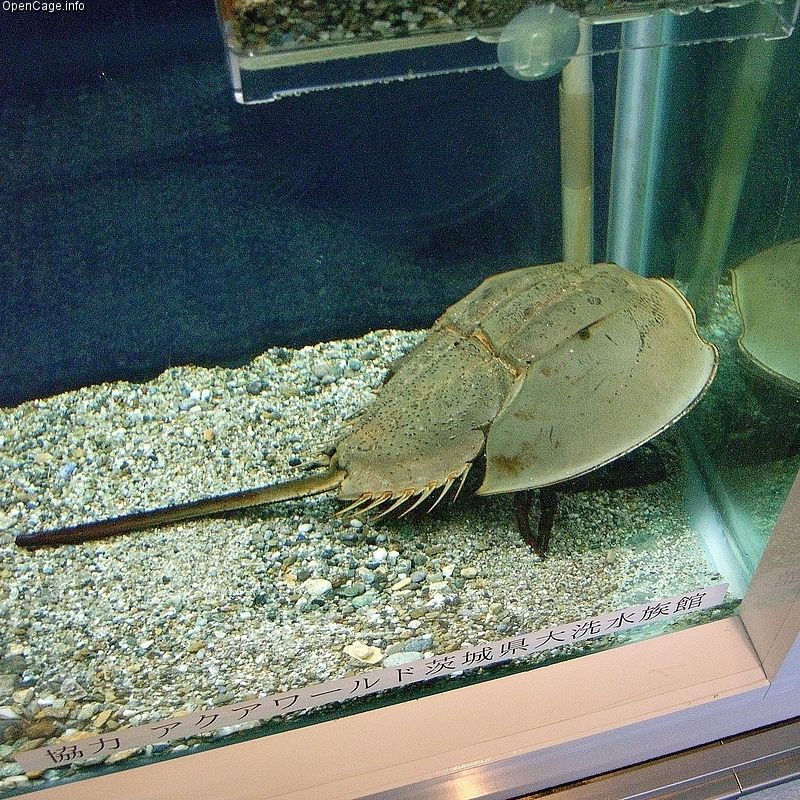- Tachypleus tridentatus
Taxobox
name = "Tachypleus tridentatus"

status = DD | status_system = IUCN2.3
regnum =Animal ia
phylum =Arthropod a
classis = Crustacea
ordo =Xiphosura
familia =Limulidae
genus = "Tachypleus "
species = "T. tridentatus"
binomial = "Tachypleus tridentatus"
binomial_authority = (Leach, 1819)
synonyms ="Tachypleus tridentatus", commonly known as the Japanese horseshoe crab or the Chinese horseshoe crab, is a species in the family
Limulidae . In China, horseshoe crab is known as "hou" (鱟). Its name in Japanese is "Kabutogani" (カブトガニ or笠岡), being also called "hachigame", or "hachigani" in some localities. Its distributional range coversChina ,Indonesia ,Japan ,Malaysia , thePhilippines ,Taiwan , andVietnam .This is one of the three extant Asian horseshoe crabs species, together with "
Tachypleus gigas " (Müller, 1785) and "Carcinoscorpius rotundicauda " (Latreille, 1802). All of these are quite similar in form and behavior to the horseshoe crab "Limulus polyphemus " found in America."Tachypleus tridentatus" once thrived on much of its distributional range, but now have largely disappeared in many places, due to destruction of the natural environment caused mainly by urban development and marine pollution. Clean and unpolluted beaches are essential for survival of this species, where adult horseshoe crabs breed and juveniles grow.
"Tachypleus tridentatus" is the only horseshoe crab species in Japan and is protected as a national treasure, but a sharp decline in number has been reported in recent years as a consequence of habitat destruction and marine pollution.
In Japan, "T. tridentatus" appear on the shores of theSeto Inland Sea at spring. Migrating from their winter hideaways, they return to the islands ofKyushu andHonshu to lay their eggs. Reportedly, each nesting pair is monagomous, choosing their mates for life.
Studies suggest that "Tachypleus tridentatus" and "Carcinoscorpius rotundicauda" breed in different habitats. For the first species, sand patches at high tide zone are essential; while freshwater streams are required by the latter. Each horseshoe crab lays a large quantity of eggs. After laying her eggs, the female horseshoe crab crawls away, leaving the shallow nest unattended. Predators and natural conditions take their toll on the developing eggs, trilobite larvae, and young horseshoe crabs. Only a very small percentage actually grow to reach adulthood and to reproduce.
Experiments have demonstrated that horseshoe crabs are unable to maintain normal embryonic and juvenile developments when exposed to oil and chlorinated hydrocarbons. Therefore, human-caused pollution is presently the main cause of their decline in population.
"Tachypleus tridentatus" is still sold in markets and eaten as a specialist sea food in China, Taiwan, Hong Kong, Malaysia, Vietnam and other areas in the region. All three species of Asian horseshoe crabs are considered a delicacy by local people. Female horseshoe crabs are specially prized for their eggs and large quantity of meat. (Luis M. Chong L.)ource
* World Conservation Monitoring Centre 1996. [http://www.iucnredlist.org/search/details.php/21309/all "Tachypleus tridentatus"] . [http://www.iucnredlist.org 2006 IUCN Red List of Threatened Species. ] Downloaded on
10 August 2007 .
Wikimedia Foundation. 2010.
